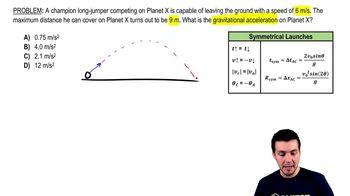Special Equations in Symmetrical Launches definitions Flashcards
 Back
BackSpecial Equations in Symmetrical Launches definitions
1/15
Terms in this set (15)
- Symmetrical LaunchA type of projectile motion where the final height equals the initial height, with equal ascent and descent times.
- Initial VelocityThe speed at which a projectile is launched, often denoted as V0.
- Launch AngleThe angle at which a projectile is launched relative to the horizontal.
- Acceleration due to GravityThe constant acceleration experienced by an object in free fall, typically 9.8 m/s² on Earth.
- Total Time of FlightThe total duration a projectile is in motion from launch to landing.
- Horizontal RangeThe total horizontal distance covered by a projectile during its flight.
- Range EquationAn equation to calculate the horizontal range: R = V0² * sin(2*theta) / g.
- Complementary AnglesTwo angles whose sum is 90 degrees, yielding the same range for a given initial velocity.
- Maximum RangeThe greatest horizontal distance achieved by a projectile, occurring at a 45-degree launch angle.
- Vertical ComponentThe part of the initial velocity acting in the vertical direction, calculated as V0 * sin(theta).
- Horizontal ComponentThe part of the initial velocity acting in the horizontal direction, calculated as V0 * cos(theta).
- Projectile MotionThe motion of an object thrown or projected into the air, subject to only the acceleration of gravity.
- DisplacementThe change in position of a projectile, often measured as the horizontal range.
- UAM EquationsUniformly Accelerated Motion equations used to describe motion with constant acceleration.
- Negative VelocityThe velocity of a projectile when it is descending, equal in magnitude but opposite in direction to the initial upward velocity.


